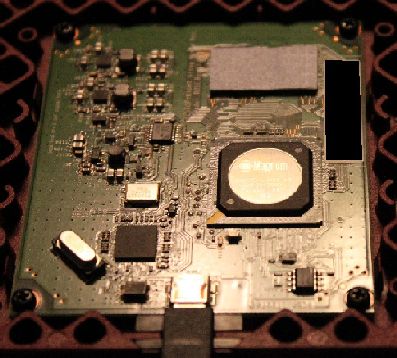With a Slingbox OR a Sling Adapter, the receiver is still decrypting before sending the video to the Sling. The difference between the Slingbox and Adapter is that the Sling Adapter gets the raw video bits from the receiver, where the Slingbox has to get the analog video from the receivers outputs and perform an analog to digital conversion. From a theoretical standpoint, the Sling Adapter is a much much better solution. However, the 722 seems to be a bit overworked, so some of the 'administrative' tasks as you put it have issues and then it disconnects, reboots the receiver, etc. The idea is superb, but the execution is classic Dish
The SlingBox ... maybe it doesn't have to re-encrypt ... if someone knew for sure check in ... but it would seem the main problem with a product like either sling ... is that there would be a push from the media/content owners to have DRM in control of the output. To have DRM you have to have some form of encryption.
I'd rather they (dish/sling/whomever) create a module, presuming the module could get local buss connections rather than the chain of stuff it goes through now..
ie. minimally you have to get the recording un-encrypted from drive, streamed to USB, transcoded (proper), back through USB to Ethernet.
Now my thinking was, if the feed coming out the eithernet has no encryption .. then it means anyone could get in-between and pull the data out, having a fairly high quality digital stream with which to do bad things with, and that's why I think its not happening without reencryption (of some form).
and I did just find this --
Slingbox Encryption Upgrade Infuriates Customers, Developer | News & Opinion | PCMag.com -- which says that Sling added encryption (page says without disclosing why) but I would bet it was forced to or probably face litigation in court for rebroadcasting content without DRM.
I'd bet there are more articles about that (encrypting stream) but I've spent more time looking already

plus the picture of which I had to find some alternative to the crap they put on there for heatsink conduction ... in the picture if you see the upper right corner, the memory chips still have this stuff on them, its almost foamish but not sure, and it barely touches the backplate where it seems clear they intended it to for heat dispersement ... that chip
(Magnum's DX6225-CBG) is low power but the adapter still feels warm when its running (2.5 Watts listed but I wonder how much heat that really is).
Anyway, If it were module based, you might expect to cut out the USB/USB transport ... even though USB is 400+Megs throughput, it would be half that when used for bidirectional communication - remember the stream has to go back to the 722k to get to the ethernet port - and maybe less than half the max speed to allow for timing, retransmit, etc ...
so without the USB you'd have less "going on" and still be able to have much of the same chips used. That also presumes the modules that plug in the back of the 722 get some form of system buss access. I'm also pretty sure they could have added more memory to the card (picture below) maybe helping when the 722k might be busy, but a module in the OTA receiver bay, would have even more room to operate disipate heat, etc.
The surprising thing, is that it says the chip itself is supposedly able to do two 1080i streams at the same time and quote "faster than real-time transcode for download-to-mobile applications". So maybe the real bottleneck is that they are pushing the limits of the 722k and find the performance "acceptible" (I've issues with audio only streams from the box, and have seen other glitches which I equate to the box, the network is wide open for the sling to my pc, and maxes at 8 to 9 megs (though I may have see it hit 12 one time I'm not sure).


